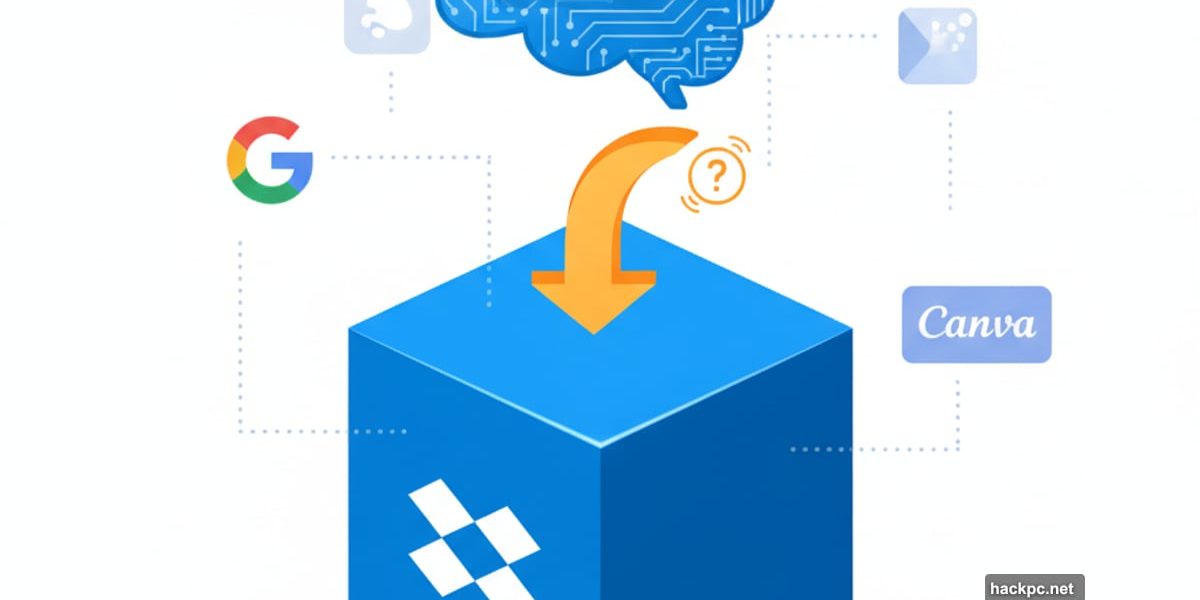
Dropbox just announced something wild. Its AI search tool, Dash, is coming to Dropbox itself.
Yes, you read that right. The company launched Dash in 2023 to search across Slack, Canva, Google Workspace and other apps. But it didn’t work with Dropbox files until now. That’s like Tesla selling self-driving software that doesn’t work in Teslas.
Better late than never, though. Plus, the new integration brings features that might actually justify the delay.
What Dash Actually Does Now
Dash acts like a super-powered search bar. But instead of just finding file names, it understands context across your entire workflow.
Here’s what changed. Previously, Dash lived as a separate app that connected to third-party tools. Now it’s baked directly into Dropbox. So you can search your stored files with the same AI smarts that work everywhere else.
The integration supports three key features. First, smarter search that understands what you’re actually looking for. Second, automatic summaries of documents and files. Third, contextual answers based on your stored content.
Moreover, multimodal search is coming soon through a partnership with Mobius Labs. That means searching inside videos, audio files and images. Not just file names or tags, but actual content within media files.
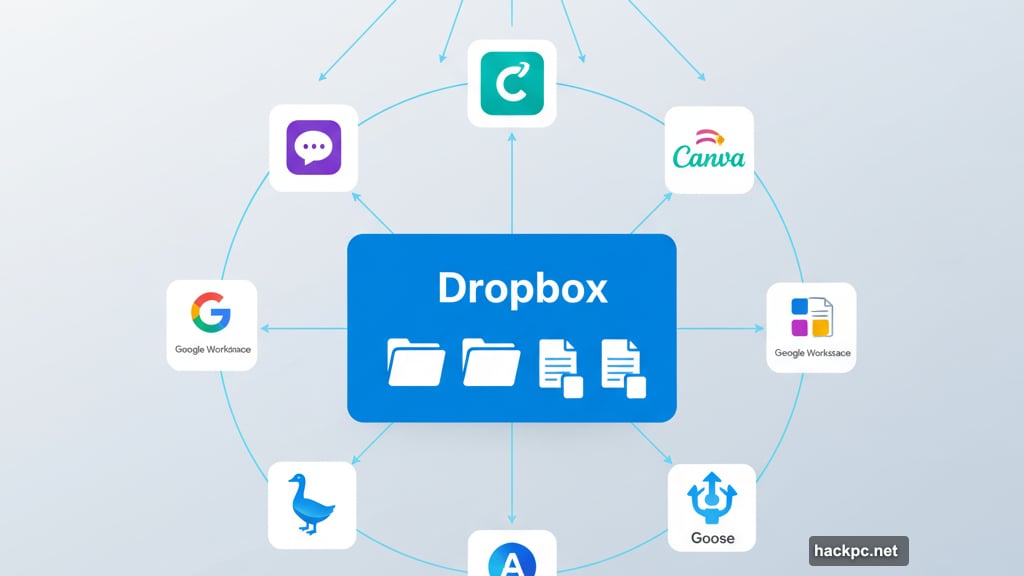
Why This Took So Long
Dropbox offered an interesting defense for the delay. They claim 95% of AI tools fail because they lack context across multiple apps.
So maybe the strategy was intentional. Build Dash for third-party apps first. Make it work really well. Then bring it home to Dropbox with better understanding of how people actually work.
Still feels backwards, though. Imagine Google launching Search for websites but not Gmail. Or Microsoft building Copilot for Slack before Teams. It’s just weird.
But the company frames it as building a foundation first. “It’s like having an AI teammate that actually understands you and your team,” Dropbox said. Whether that teammate should have understood your Dropbox files from day one remains an open question.
Two Ways to Use Dash
Dropbox offers two access methods now. First is the standalone Dash app. It’s easy to set up and aims to solve the scattered content problem. You install it, connect your apps, and search across everything from one place.
Second is the new Dropbox integration. This lives inside the regular Dropbox interface. So you don’t need a separate app if you primarily work within Dropbox itself.
Plus, there’s a third option for developers. Dropbox launched the Dash MCP server. That means apps like Claude, Cursor and Goose can access Dash search directly. “Whether you’re drafting an email or reviewing code, the answers and insights you need are always at your fingertips,” the company wrote.
That MCP integration matters more than it sounds. It means Dash becomes the search layer for other AI tools. Instead of each AI assistant searching separately, they can all tap into Dash’s unified index.
The Catch You Probably Expected
Early access requires joining a waitlist. Because of course it does.
Right now, the Dash app only works for teams in the US. English only. However, you don’t need a paid Dropbox plan, which is something at least.
Wider availability for Dash within Dropbox is coming “in the coming months.” That’s tech company speak for “we’re not committing to a date.”
So if you’re excited about this, prepare to wait. Again. Just like Dropbox made everyone wait for Dash to work with Dropbox files in the first place.
Does This Actually Matter?
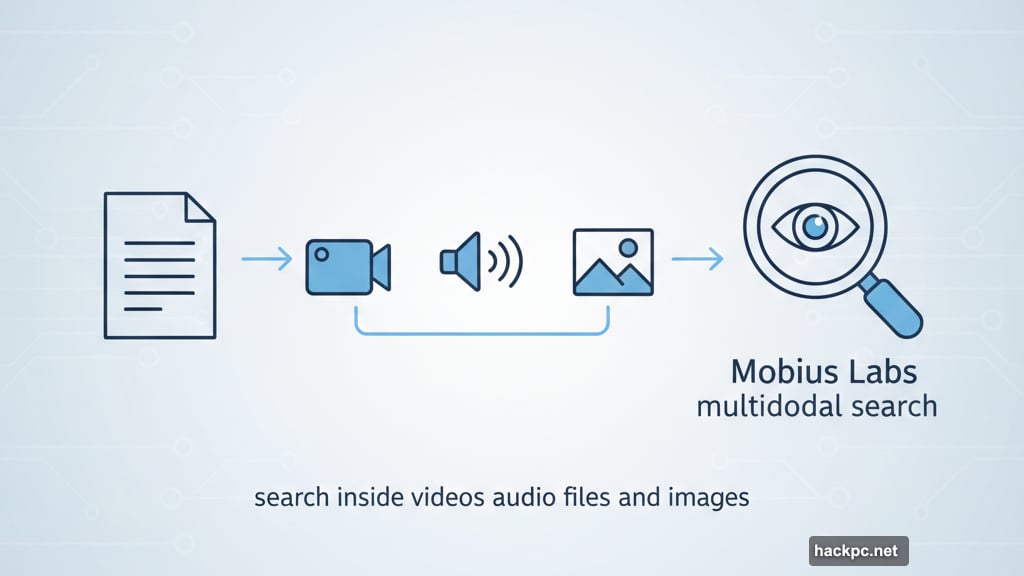
Here’s the real question. Does bringing Dash to Dropbox change anything meaningful?
Maybe. If you already use Dropbox heavily and connect it with Slack, Google Workspace and other tools, Dash could genuinely save time. Finding information across multiple platforms remains painful for most knowledge workers.
But the AI search space is crowded now. Google has Search with AI. Microsoft has Copilot. Notion has AI search. Slack has its own AI features. So Dropbox needs to prove Dash works better than alternatives, not just that it exists.
The multimodal search feature could be the differentiator. Searching inside videos and audio files solves a real problem that most tools ignore. If that works well, it might justify using Dropbox over competitors.
Still, the whole “finally adding our AI to our own product” thing doesn’t inspire confidence. It suggests Dropbox is playing catch-up rather than leading innovation. And in a market where everyone’s adding AI features, catch-up isn’t a winning position.
But for teams already invested in Dropbox, this integration removes friction. You won’t need to switch between apps just to find files. That’s worth something, even if it should have been there from the start.
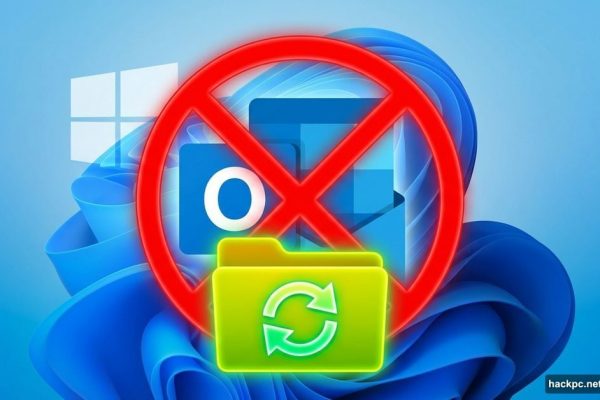

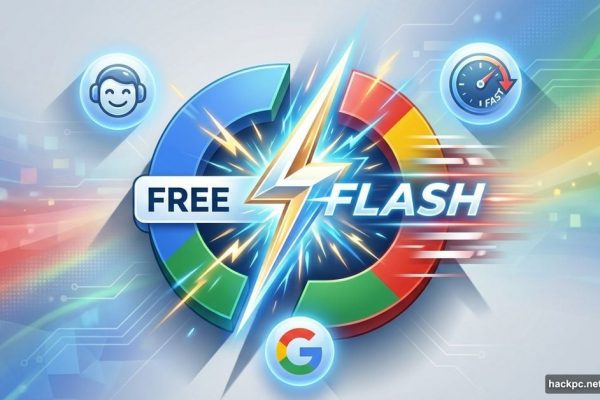
Comments (0)